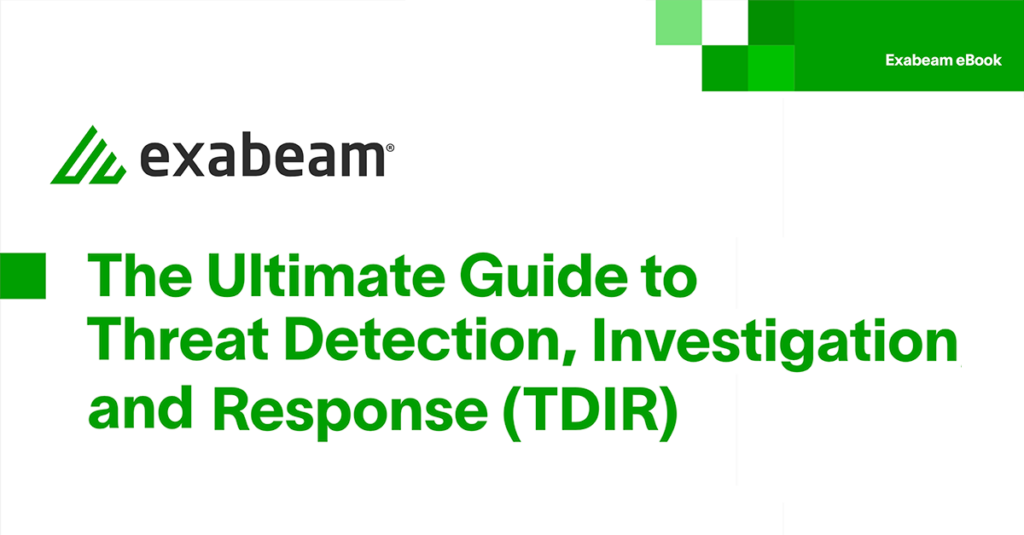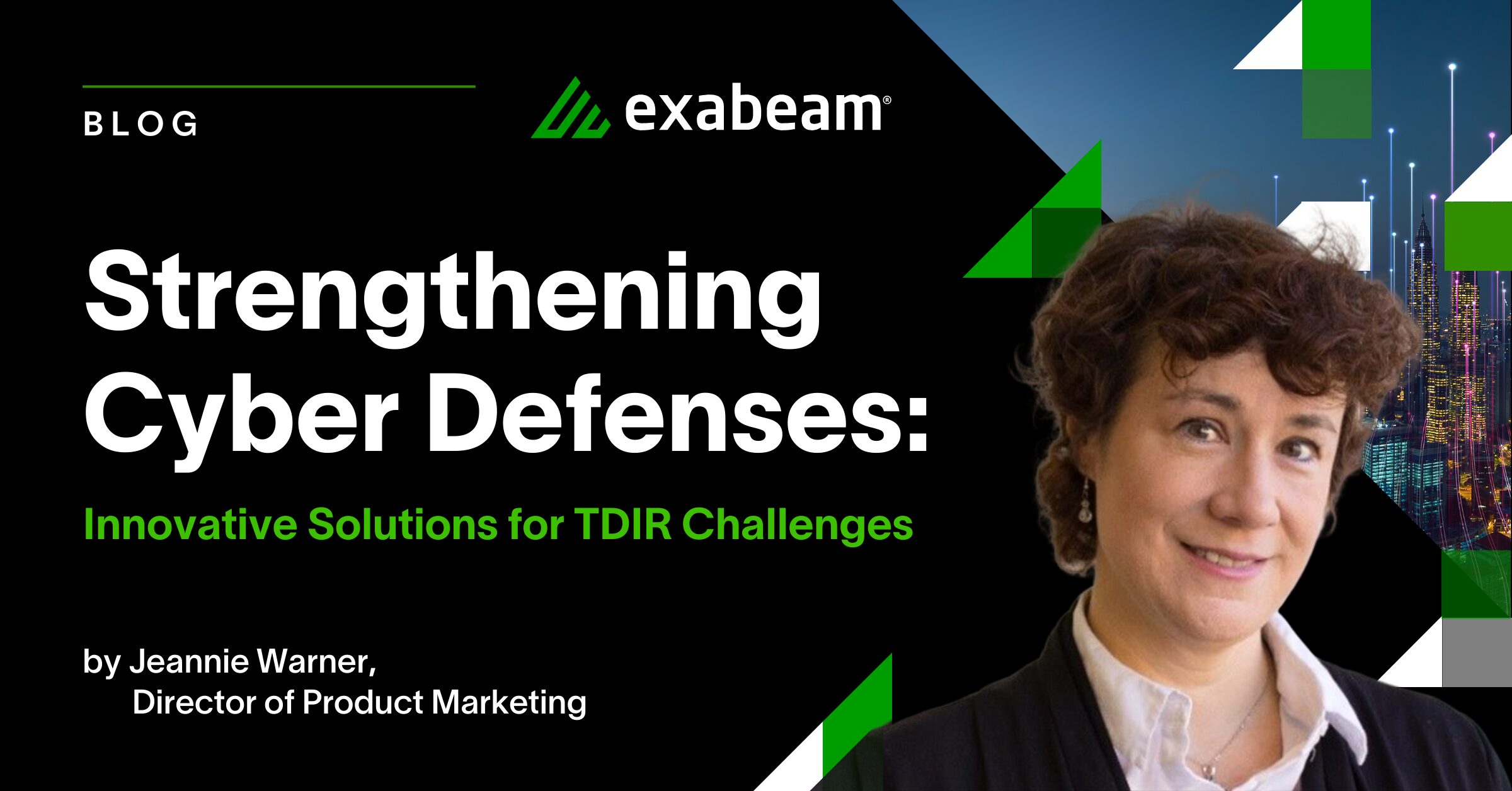As we advance into the first quarter of 2024, the critical importance of robust cybersecurity defenses becomes increasingly clear. Reflecting on 2023 reveals a digital arena in rapid evolution, marked by the growing complexity and sophistication of cyber threats. This ongoing struggle between cybersecurity defenses and cyber adversaries highlights the current era as a critical battleground of resilience, innovation, and strategic foresight. In this context, TEN18 by Exabeam steps forward to dissect these developments, aiming to shed light on the unfolding challenges and equip organizations with the insights needed to navigate these turbulent waters.
In this article:
- Combating AI-powered attacks
- Security as a foundational element
- Purpose-building a secure environment
- Tackling a new era of vulnerabilities
- Trends shaping the future of cyber defense strategies
- Solutions to rising security challenges
Combating AI-powered attacks
An escalation of threats — notably sophisticated ransomware attacks and AI-powered phishing campaigns — has emphasized the need for more advanced cybersecurity measures. These threats have demonstrated an unsettling ability to leverage the power of artificial intelligence for bad, bypassing traditional defenses with disturbing ease and precision. The question that now presents itself is not if, but when, the infrastructure that organizations rely upon might falter under these relentless attacks. This concern is far from hypothetical in an era where digital infrastructures underpin the very essence of our societal and business operations. Understanding the interconnected nature of cybersecurity — where an attack on one node can trigger a cascade of disruptions across multiple platforms — becomes paramount.
Security as a foundational element
As we delve deeper into the complexities of ensuring digital safety, CISA’s principles of Secure by Design gain prominence. Secure by Design embodies a holistic approach to cybersecurity, asserting that security should be an integral component of digital infrastructure from the outset. It dictates that every aspect of system development, from conceptual design to deployment, must incorporate security considerations to preemptively address vulnerabilities. The primary antagonist of Secure by Design is the lingering notion that security can be an add-on or a later stage consideration rather than a foundational element of digital infrastructure development.
Digital transformation, while a driver of progress, inadvertently becomes a challenge to Secure by Design. Rapid deployment of new technologies and the push for innovation often sideline security considerations, leaving vulnerabilities in their wake. The trend toward digital acceleration has also fostered the emergence of new stakeholders in cybersecurity — from developers and product managers to the C-suite — each bearing a part of the responsibility for embodying Secure by Design principles.
Purpose-building a secure environment
As illustrated below, organizations looking to adopt the Secure by Design approach can begin by familiarizing themselves with the following core components.
Secure by Design examples:
- Memory-safe Programming Languages: Utilizing languages like Rust to inherently prevent common security vulnerabilities.
- Automated Security Practices: Embedding automated updates and vulnerability patches as default system behaviors.
- Principle of Least Privilege: Designing systems where access is limited to what is necessary, minimizing potential breach points.
Organizations that truly embody Secure by Design principles share several distinguishing characteristics:
- They prioritize security from the initial design phase, integrating it into every aspect of system and product development.
- There’s a clear commitment from top leadership down to ensure security is not an afterthought but a key consideration in all decision-making processes.
- Continuous education and awareness about security best practices are embedded within the company culture, ensuring all team members understand their role in maintaining security.
For CISOs looking to measure the efficacy of these principles within their organizations, a high-level score might consider:
- The integration level of security considerations in the initial design phases of projects
- The frequency and depth of security training sessions for non-security personnel
- The response time to newly identified vulnerabilities and the effectiveness of deployed patches
Tackling a new era of vulnerabilities
Cybersecurity is not just changing; it’s intensifying, with the recent record-setting number of common vulnerability scoring system (CVSS) vulnerabilities underscoring this shift. However, it’s not merely the volume of vulnerabilities that’s alarming but their escalating severity. We’re witnessing the emergence of “super 10” vulnerabilities — flaws so critical that they transcend traditional severity scales, becoming prime targets for exploitation by both criminal syndicates and nation states. These vulnerabilities often leave organizations with drastic response actions, such as de-federating and disconnecting entirely from compromised networks — a measure few have practiced or even considered in their risk management strategies.
This escalating threat landscape necessitates a paradigm shift from the traditional “buyer beware” mentality to a model where the creators of digital products and services — especially software companies — assume a greater share of the security burden. This transition is imperative not only for protecting individual users but for safeguarding the entire digital ecosystem from the cascading effects of these “super 10” vulnerabilities. Moreover, this shift underscores the need for cybersecurity to be a priority at the highest echelons of corporate governance. Executives and board members must now embrace their roles as custodians of cyber risk, embedding rigorous cybersecurity considerations into the fabric of strategic decision-making and operational planning, thereby fostering a more resilient digital future.
Trends shaping the future of cyber defense strategies
Looking towards the future, the cybersecurity terrain is set to be shaped by a series of pivotal trends, each carrying its own set of challenges and implications for organizational security posture. Notably, the persistence of supply chain attacks underscores the fragility of our interconnected digital ecosystems, necessitating a robust and comprehensive approach to defense that spans beyond traditional cybersecurity measures. This environment demands a reevaluation of incident response strategies, particularly emphasizing the integration of business continuity planning (BCP) and disaster recovery into cybersecurity efforts. Such a scenario suggests the potential benefit of tabletop exercises designed to simulate high-impact, low-control situations for security teams, possibly requiring a specialized type of incident coordinator skilled in navigating the nuances of these complex challenges.
Moreover, the financial toll of business email compromise (BEC) attacks has amounted to $2.7 billion in losses in 2022 alone — a staggering 47% increase since 2020, and a stark reminder of the evolving threat landscape. This surge, coupled with the reemerging advent of AI, is poised to amplify these threats. In the wake of information-rich breaches, it necessitates an urgent reassessment of cybersecurity tactics. Organizations must not only bolster their defenses against a growing array of social engineering and zero-day exploits but also cultivate a deeper understanding of these trends. The insights from the past year, highlighting the critical nature of these evolving challenges, become indispensable in crafting strategies that are both resilient and adaptive in 2024.
Solutions to rising security challenges
As we chart our course through 2024, the lessons learned from the previous year underscore the need for a proactive, holistic approach to cybersecurity. By embracing the principles of Secure by Design, fostering a culture of security awareness, and ensuring that responsibility for cybersecurity is embedded at all levels of the organization, we can look to the future with confidence. TEN18 by Exabeam remains dedicated to advancing cybersecurity knowledge and practices, guiding organizations through the complexities of the digital age, and ensuring a secure digital future for all.
Unlock advanced TDIR strategies
Discover the critical insights and advanced strategies needed to enhance your threat detection, investigation, and response (TDIR) capabilities. Read The Ultimate Guide to TDIR — a comprehensive resource with essential practices to understand and master the TDIR workflow. Leverage the latest in SIEM technologies, optimize your log management, and achieve excellence in incident response.
Elevate your cybersecurity strategy and improve your security team’s efficiency and effectiveness. Download your guide now.

Similar Posts
Recent Posts
Stay Informed
Subscribe today and we'll send our latest blog posts right to your inbox, so you can stay ahead of the cybercriminals and defend your organization.
See a world-class SIEM solution in action
Most reported breaches involved lost or stolen credentials. How can you keep pace?
Exabeam delivers SOC teams industry-leading analytics, patented anomaly detection, and Smart Timelines to help teams pinpoint the actions that lead to exploits.
Whether you need a SIEM replacement, a legacy SIEM modernization with XDR, Exabeam offers advanced, modular, and cloud-delivered TDIR.
Get a demo today!












